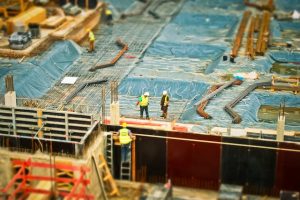It’s no secret that newly built homes have issues. One annual survey completed by the House Builders Federation and the New Homes Warrant Scheme noted that 30% of buyers said their new build had more problems than they’d anticipated, and 41% said they reported more than ten problems to the builder.
Note how the 30% of people with more issues than anticipated did anticipate some issues – should this be the case if you’re buying a brand-new home?
You can anticipate issues in what can be called ‘older homes’, but a newly built and purchased home makes it seem like it should be refundable.
It’s a shame you can’t keep the receipt and take it back. So, why are so many new homes riddled with issues? Let’s explore.
1. Quick Construction

In the rush to meet market demands, many builders prioritise speed over quality. This race against time often leads to houses being constructed too quickly, resulting in oversight and errors. Hasty construction can mean missed details, shoddy workmanship, and a lack of thorough inspection processes. The result? New homeowners are often left to deal with the aftermath of these construction shortcuts.
2. Overrun Building Sites (Too Many Houses)

Another issue plaguing new buildings is the overcrowding of building sites. When developers try to squeeze as many houses as possible into a development, quality control suffers. It’s not just the quantity of homes but the reduced space for workers and equipment that contributes to a decline in construction standards – and a general lack of oversight.
This packed environment leads to mistakes and a lack of attention to detail, all of which the end buyer inevitably suffers.
3. Trying to Cut Costs

Cost-cutting measures are often at the heart of the problem – yet this is perhaps the number one reason for poor design. To boost profits or simply to save money, builders may opt for cheaper materials or hire less skilled labour. But you do get what you pay for. Companies can save money by hiring rather than buying – concrete barrier hire at JP Concrete, for example, is more cost-effective than buying for short-term construction projects.
These budget reductions can lead to poor insulation, plumbing issues, and subpar construction.
The initial savings for the builder can result in long-term costs and headaches for the homeowner.
4. Poor Site Selection

The location and condition of the building site itself can be a significant factor. Poor site selection – such as building on flood plains or areas with unstable ground – can lead to structural problems.
Proper site evaluation and preparation are essential, but these steps can be overlooked or rushed in the eagerness to start construction. Civil engineers and site managers will evaluate land and construct a design that (should) work.
The issues with new buildings stem from numerous factors, including the push for rapid construction, overcrowded building sites, cost-cutting measures, and inadequate site selection. These elements create a perfect storm that leaves new homeowners with numerous problems. More attention, care, and investment are needed when constructing new homes.
Author Profile

- Online Media & PR Strategist
- As the Chief of Marketing at the digital marketing agency ClickDo Ltd I blog regularly about technology, education, lifestyle, business and many more topics.
Latest entries
 LifestyleApril 9, 2025Top 28 Hatton Garden Jewellers to Shop for the Best Jewellery
LifestyleApril 9, 2025Top 28 Hatton Garden Jewellers to Shop for the Best Jewellery Companies In LondonApril 9, 202510 Best Accounting Firms for Small Businesses in London
Companies In LondonApril 9, 202510 Best Accounting Firms for Small Businesses in London Business AdviceMarch 27, 20259 Ways Technology Helps Businesses Offer Better Promotions
Business AdviceMarch 27, 20259 Ways Technology Helps Businesses Offer Better Promotions Health & BeautyMarch 16, 2025Top 15 Dentists in London – Private Emergency Dentist
Health & BeautyMarch 16, 2025Top 15 Dentists in London – Private Emergency Dentist




